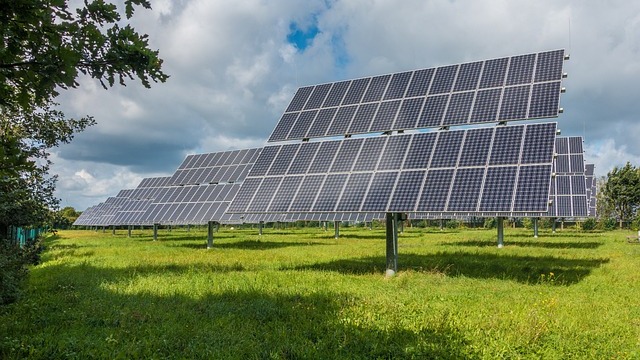
The Built Environment’s Hidden Carbon Footprint
Many people overlook the role that buildings play in contributing to global CO2 emissions. While electric vehicles are gaining attention as a crucial step toward sustainable transportation, the emissions from our commercial and residential buildings remain alarming. Surprisingly, buildings account for a staggering 38% of global CO2 emissions. This figure highlights a significant area where immediate action can lead to considerable climate benefits. From lighting to heating and cooling, every aspect of a building's operation contributes to that figure. To truly combat climate change, we need to view buildings not merely as structures but as potential carbon sinks.
Innovative Solutions: Turning Buildings into Carbon Sinks
One promising solution is the integration of direct air capture (DAC) technology within heating, ventilation, and air conditioning (HVAC) systems. Companies like Soliter Power are making strides toward enabling commercial construction and property owners to reduce their carbon footprints while enhancing the work environment for tenants. But what exactly does DAC entail? Simply put, DAC technology actively removes CO2 from the air, addressing the excess carbon in our atmosphere head-on. This innovative approach pairs well with existing building operations, making it an attractive option for property owners.
Health Benefits of Clean Air
Furthermore, improving indoor air quality is not only beneficial to the planet; it has tangible health benefits for those who occupy these spaces. Studies indicate that maintaining CO2 levels close to outdoor conditions can enhance cognitive performance. After the pandemic, the demand for healthier work environments is higher than ever. Employees prioritize good indoor air, recognizing how essential it is for their well-being. For building owners, achieving a net-zero status can also attract tenants who prioritize sustainability in their operations.
Why Climate-Neutral Buildings Matter
Businesses today are increasingly aware of their environmental impact and seek to claim net-zero status. Building owners can help tenants meet these goals by implementing technologies that facilitate carbon capture and improve energy efficiency. The case for deep investment in making buildings climate-neutral extends beyond mere compliance; adopting DAC technology could lead to economic benefits as energy costs decline.
Real-World Applications of DAC Technology
Soliter Power, for example, has successfully implemented DAC systems in various commercial environments—from capturing CO2 during events at the Dubai World Expo to constructing carbon-negative operational frameworks in places like Finland. Their systems operate alongside current ventilation frameworks, making them a feasible solution for existing buildings.
The Road Ahead: Scalability and Market Growth
As environmental regulations strengthen worldwide, particularly in regions like Denmark and New York, there’s a growing recognition that DAC solutions are vital to meeting these stricter emissions standards. The potential market for this technology is enormous, especially in high-rise office buildings that depend on mechanical ventilation. As more and more buildings pursue net-zero strategies, businesses offering DAC solutions will find themselves in a strong position to thrive.
Empowering Investors and Stakeholders
For individual and business investors, the shift toward climate-resilient investments isn't just a trend but a necessity. Investing in companies that specialize in DAC technology allows stakeholders to contribute proactively to the fight against climate change while potentially reaping financial rewards. The health of our planet and economic resilience go hand in hand, fostering a sustainable future.
Conclusion: Taking Action for a Greener Future
As we navigate the complexities of climate change, it is crucial for both investors and stakeholders to stay informed about innovative solutions transforming the built environment. The integration of direct air capture technology into buildings presents an opportunity not just for reducing emissions but for re-thinking how we approach our health and environmental responsibilities. Embracing these advancements is not merely an investment in technology; it’s an investment in our collective future.
If you’re interested in sustainable investment opportunities and the future of environmental technology, consider exploring the innovative pathways shaping the industry. The next steps you take could not only improve your portfolio but also contribute to a healthier planet.
 Add Row
Add Row  Add
Add 




Write A Comment